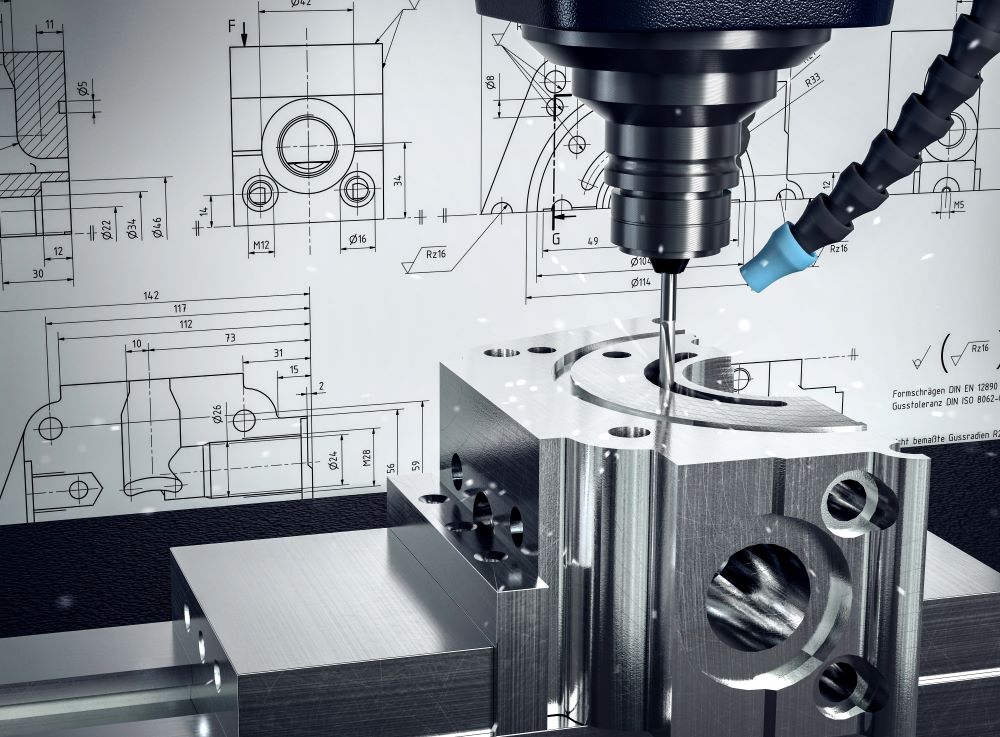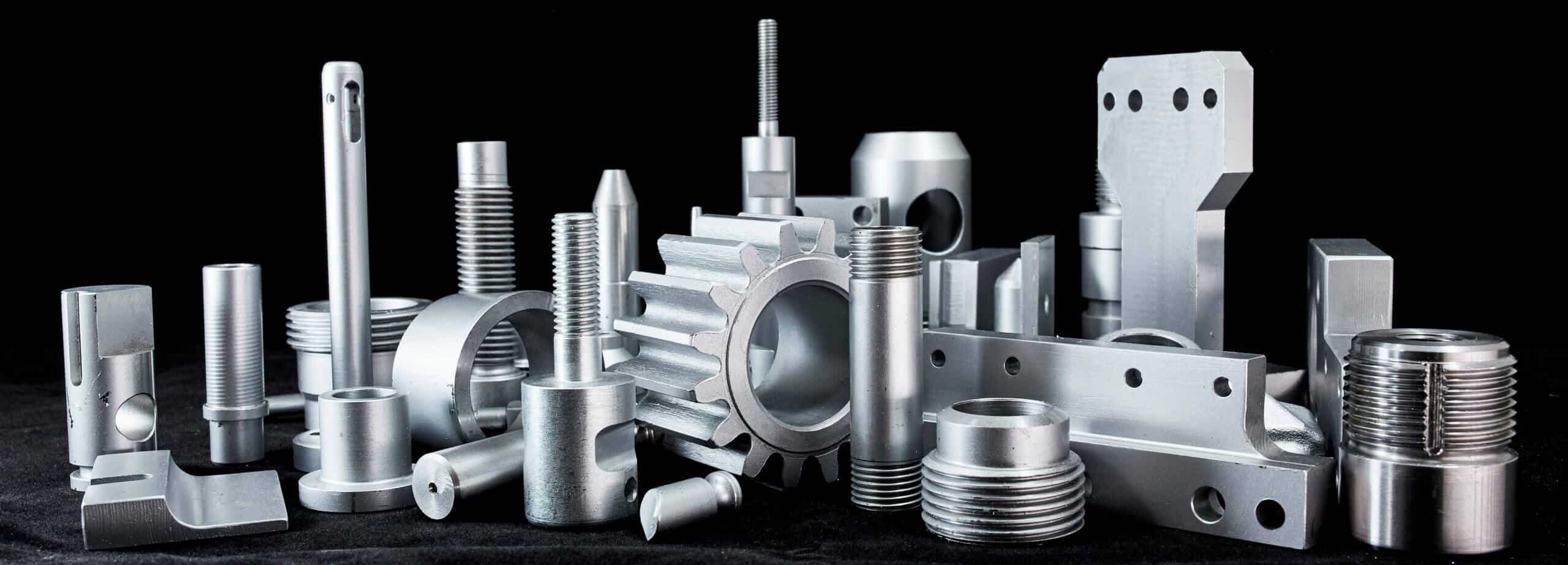Innovative Fasteners and Machining Solutions for Complex Styles
Innovative Fasteners and Machining Solutions for Complex Styles
Blog Article
Navigating the Globe of Fasteners and Machining: Techniques for Accuracy and Rate
In the complex world of fasteners and machining, the mission for accuracy and speed is a continuous challenge that demands thorough interest to information and strategic planning. From recognizing the diverse variety of fastener types to picking ideal products that can stand up to extensive demands, each action in the process plays an essential role in attaining the desired end result. Accuracy machining methods additionally elevate the complexity of this craft, needing a fragile balance between technical proficiency and ingenious strategies. As we look into the methods that can enhance both speed and performance in this domain, the interplay in between quality assurance steps and operational quality arises as a crucial centerpiece.
Understanding Bolt Kind
When picking bolts for a job, comprehending the various types offered is critical for ensuring optimum performance and integrity. Bolts are available in a variety of types, each developed for specific applications and needs. Bolts are used with nuts to hold products together, while screws are versatile bolts that can be used with or without a nut, relying on the application. Nuts, on the various other hand, are inside threaded fasteners that friend with bolts or screws, supplying a protected hold. Washers are crucial for distributing the load of the bolt and preventing damages to the material being attached. Furthermore, rivets are irreversible fasteners that are ideal for applications where disassembly is not needed. Understanding the distinctions between these bolt kinds is necessary for choosing the right one for the task, ensuring that the link is solid, resilient, and reliable. By choosing the ideal fastener kind, you can optimize the performance and long life of your project - Fasteners and Machining.
Picking the Right Products
Understanding the significance of picking the right materials is vital in making certain the optimal performance and dependability of the picked fastener types went over formerly. When it involves fasteners and machining applications, the material selection plays a crucial role in figuring out the general toughness, durability, corrosion resistance, and compatibility with the intended atmosphere. Various products offer varying homes that can significantly impact the performance of the fasteners.
Common materials made use of for fasteners consist of steel, stainless-steel, brass, titanium, and light weight aluminum, each having its unique strengths and weaknesses. Steel is renowned for its high toughness and resilience, making it suitable for a variety of applications. Stainless-steel uses exceptional rust resistance, ideal for atmospheres vulnerable to moisture and chemicals. Aluminum is corrosion-resistant and light-weight, making it ideal for applications where weight reduction is important. Brass is frequently chosen for its visual charm and outstanding conductivity. Titanium is known for its exceptional strength-to-weight proportion, making it suitable for high-performance applications. Selecting the right product involves taking into consideration variables such as stamina requirements, important link ecological conditions, and spending plan restrictions to ensure the desired efficiency and durability of the bolts.
Precision Machining Techniques

Along with CNC machining, other precision methods like grinding, transforming, milling, and drilling play essential functions in fastener production. Grinding aids attain fine surface finishes and tight dimensional tolerances, while turning is typically made use of to produce cylindrical elements with exact sizes. Milling and exploration procedures are vital for shaping and developing openings in bolts, ensuring they fulfill precise requirements and function properly.
Enhancing Rate and Performance
To optimize fastener production processes, it is vital to streamline operations and execute effective approaches that complement precision machining techniques. One essential technique for improving rate and effectiveness is the execution of lean production concepts. By lowering waste and concentrating on continuous improvement, lean practices help eliminate bottlenecks and optimize workflow. Additionally, investing in automation technologies can significantly boost production speed. Automated systems can handle repetitive tasks with precision and speed, allowing employees to concentrate on even more facility and value-added tasks. Taking On Just-In-Time (JIT) stock administration can likewise improve efficiency by making sure that the ideal materials are offered at the best time, lessening excess stock and decreasing lead times. Cultivating a society of cooperation and communication among team members can boost overall efficiency by advertising openness, analytic, and innovation. By combining these strategies, suppliers can accomplish a balance in between rate and precision, eventually enhancing their competitive edge in the bolt industry.
Quality Assurance Actions
Executing extensive quality assurance steps is critical in guaranteeing the dependability and uniformity of fastener products in the manufacturing process. Quality assurance measures include different phases, beginning from the selection of resources to the last inspection of the completed bolts. One basic aspect of quality control is conducting detailed product inspections to verify compliance with specs. This includes examining variables such as product longevity, make-up, and toughness to assure that the bolts fulfill sector criteria. In addition, monitoring the machining refines is necessary to copyright dimensional accuracy and surface area coating top quality. Using advanced technology, such as automated examination systems and precision measuring devices, can enhance the accuracy and performance of high quality control treatments.
Routine calibration of equipment and machinery is imperative my link to keep consistency in production and ensure that bolts meet the necessary resistances. Executing rigorous protocols for determining and dealing with non-conformities or issues is important in stopping substandard items from entering the marketplace. By developing a thorough quality control framework, makers can promote the reputation of their brand and provide bolts that fulfill the highest possible standards of efficiency and sturdiness.
Verdict

In the detailed world of bolts and machining, the mission for accuracy and speed is a continuous obstacle that requires careful interest to detail and tactical planning. When it comes to fasteners and machining applications, the material option plays an essential function in determining the overall toughness, durability, deterioration resistance, and compatibility with the desired atmosphere. Precision machining involves various innovative methods that ensure the limited resistances and specs required for bolts.In enhancement to CNC machining, other precision techniques like grinding, transforming, milling, and drilling play important roles in bolt manufacturing.To optimize fastener manufacturing processes, it is vital to streamline procedures and carry out efficient techniques that complement accuracy my response machining methods.
Report this page